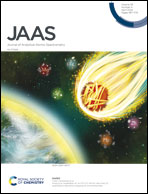Filament induced breakdown spectroscopy with enhanced excitations from plasma gratings
Abstract
Nonlinear interaction of two or three synchronized coplanar filaments was demonstrated to generate plasma gratings with high electron density capable of effectively exciting samples. This excitation was further enhanced by multi-photoionization and electron collision. Consequently, an increase in laser pulse energy led to a decrease in the full width at half maxima (FWHM) of spectral lines, primarily observed in breakdown spectroscopic lines due to electron signal enhancement. Moreover, by measuring the emission line intensity as a function of time delay and excitation laser pulse energy, the radiative lifetime and self-absorption correlation coefficient of neutral atomic and ionic lines were determined to exhibit longed plasma lifetimes in the presence of filament interaction. The enhancement was particularly notable when using three coplanar coupled filaments for excitation, as it resulted in a plasma lifetime increase of approximately 50–60 ns compared to that when using two filaments for atomic lines. These findings indicate that high-electron density in plasma gratings could improve the application of filament-induced breakdown spectroscopy by enhancing spectral resolution, radiative lifetime, and spectral reproducibility.



 Please wait while we load your content...
Please wait while we load your content...